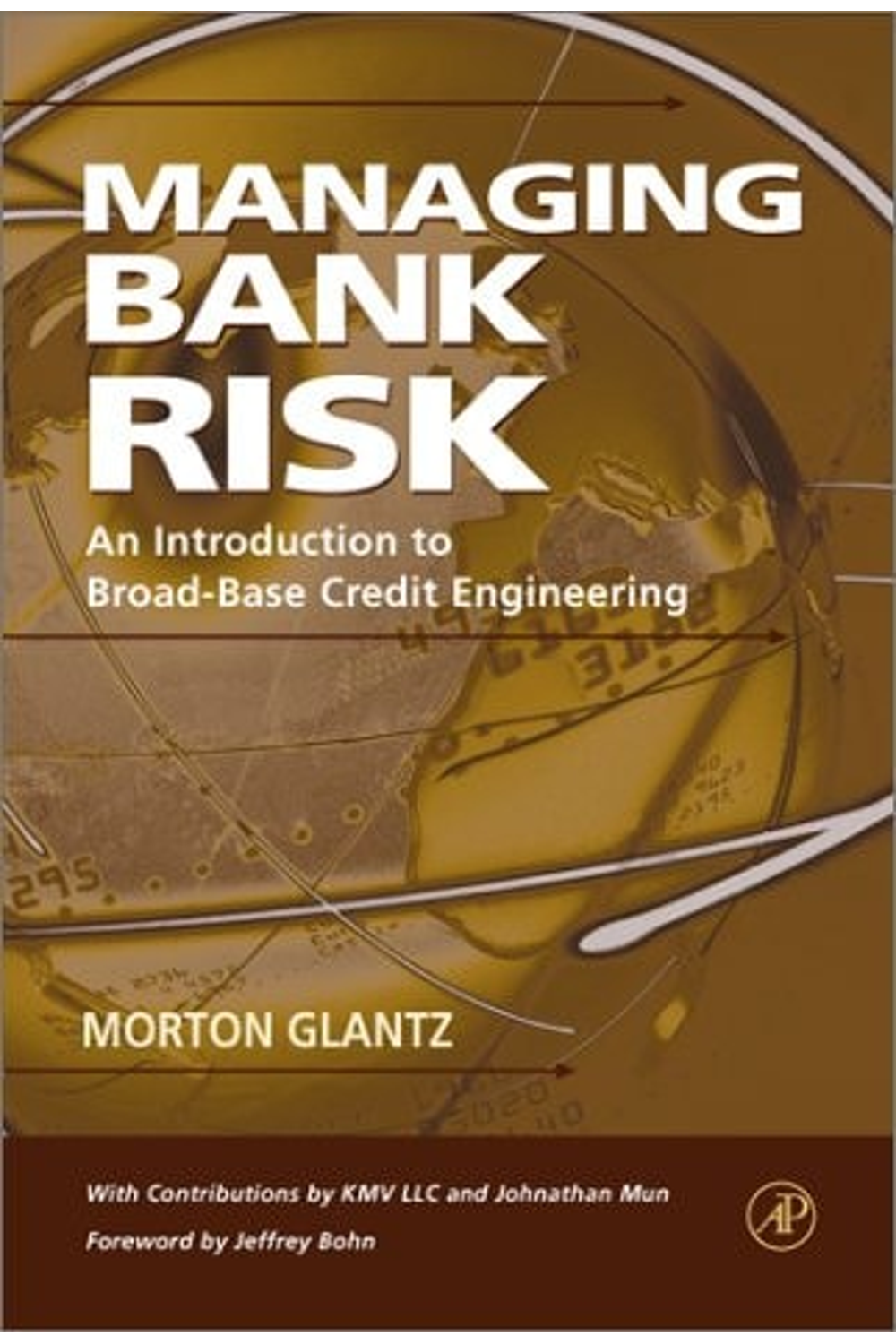Elevate your bank’s risk management with Morton Glantz’s “Managing Bank Risk.” This hardcover guide provides a comprehensive introduction to broad-base credit engineering, equipping professionals and students with the strategies to navigate today’s complex financial landscape. Beyond traditional approaches, Glantz integrates modern portfolio management techniques to refine credit risk assessment and mitigation. **Key Benefits:** * **Actionable Insights:** Master credit derivatives, cash flow modeling, and distress prediction. * **Regulatory Compliance:** Aligned with Basel Committee guidelines for a sound risk environment. * **Practical Tools:** CD-ROM with interactive models, including risk rating, cash flow, and loan pricing tools. * **Expert Guidance:** Morton Glantz delivers proven methodologies for credit granting, monitoring, and control. Ideal for lending professionals and graduate students, this book delivers the knowledge and tools to enhance asset quality, optimize credit portfolios, and drive sustainable growth in a dynamic banking world. The comprehensive coverage makes this an essential resource for success in credit risk management. Explore the fundamentals and cutting-edge tools necessary for effective credit risk management, providing an indispensable resource for navigating the intricacies of modern banking and finance. This updated edition incorporates the latest industry standards and regulatory requirements, providing real-world case studies and examples. Discover how to implement these strategies to secure your bank’s future.
Managing Bank Risk: An Introduction to Broad-Base Credit Engineering
19,83 $
In stock
Managing Bank Risk reformulates proven concepts of credit risk management in the context of contemporary best practice techniques in portfolio management.
Professor Glantz provides print and electronic risk-measuring tools that ensure that credits are made in accordance with bank policy and regulatory requirements, giving bankers the data necessary for judging asset quality and value. The book’s two sections, New Approaches to Fundamental Analysis and Credit Administration, show readers ways to assimilate new tools, such as credit derivatives, cash flow computer modeling, distress prediction and workout, interactive risk rating models, and probabilistic default screening, with well-known controls. By following the guidelines of the Basel Committee on Banking Supervision, the book offers useful models, programs, and documents essential for creating a sound credit risk environment, credit granting processes, and appropriate administrative and monitoring controls.
This book is recommended for professionals working in lending industries and graduate students studying commercial banking, financial accounting, financial intermediation, financial studies, and international finance. Key Features
* Book includes features such as:
* Chapter-concluding questions
* Case studies illustrating all major tools
* EDF Credit Measure provided by KMV, the world’s leading provide of market-based quantitative credit risk products
* Library of internet links directs readers to information on evolving credit disciplines, such as portfolio management, credit derivatives, risk rating, and financial analysis
* CD-ROM containing interactive models and a useful document collection
* Credit engineering tools covered include:
* Statistics and simulation driven forecasting
* Risk adjusted pricing
* Credit derivatives
* Ratios
* Cash flow computer modeling
* Distress prediction and workouts
* Capital allocation
* Credit exposure systems
* Computerized loan pricing
* Sustainable growth
* Interactive risk rating models
* Probabilistc default screening
* Accompanying CD includes:
* Interactive 10-point risk rating model
* Comprehensive cash flow model
* Trial version of CB Pro, a time-series forecasting program
* Stochastic net borrowed funds pricing model
* Asset based lending models, courtesy Federal Reserve Bank
* The Uniform Financial Institutions Rationg System (CAMELS)
* Two portfolio optimization software models
* a library of documents from the International Swap Dealers Association, the Basel Committee on Banking Supervision, and others
| Authors | |
|---|---|
| Binding | |
| Condition | |
| ISBN-10 | 0122857852 |
| ISBN-13 | 9780122857850 |
| Language | |
| Pages | 688 |
| Publisher | |
| Year published | |
| Weight | 1048 |
| Edition | 1 |
Related products
HOW MONEY BECAME DANGEROUS
22,67 $
- Additional information
- Currencies
- USD – United States dollar
- EUR – Euro
- GBP – Pound sterling
- CNY – Chinese yuan
- BRL – Brazilian real
- MXN – Mexican peso
- JPY – Japanese yen
- PHP – Philippine peso
- THB – Thai baht
- PLN – Polish złoty
- CAD – Canadian dollar
- MYR – Malaysian ringgit
- AUD – Australian dollar
- TWD – New Taiwan dollar
- CZK – Czech koruna
- SEK – Swedish krona
- HUF – Hungarian forint
- ILS – Israeli new shekel
- CHF – Swiss franc
- HKD – Hong Kong dollar
- DKK – Danish krone
- SGD – Singapore dollar
- NOK – Norwegian krone
- NZD – New Zealand dollar





